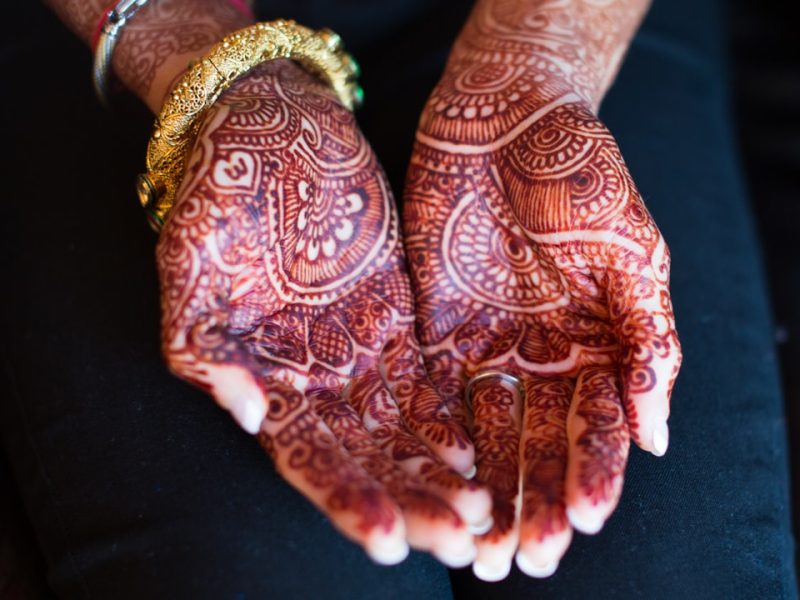Physical activity is essential for maintaining a healthy lifestyle, and dance is a fantastic way to incorporate exercise into your routine. Whether you’re practicing ballet, salsa, or hip-hop, dancing can improve your cardiovascular health, strength, flexibility, and endurance. The repetitive movements in dance help to build muscle tone and improve overall body composition. Additionally, dancing can be a great way to improve your balance and coordination, which can help prevent falls and injuries, especially as you age.
Furthermore, dancing is a full-body workout that can help you burn calories and maintain a healthy weight. Depending on the intensity of the dance style, you can burn anywhere from 200 to 600 calories per hour. This makes dance an effective form of exercise for those looking to lose weight or maintain their current weight. Additionally, the aerobic nature of dance can help improve your lung capacity and overall respiratory health. Overall, incorporating dance into your fitness routine can lead to improved physical health and overall well-being.
Dance is also a low-impact form of exercise, making it accessible to people of all ages and fitness levels. Unlike high-impact activities like running or jumping, dancing puts less stress on the joints, making it a great option for those with joint pain or arthritis. Whether you’re a beginner or an experienced dancer, there are various styles and levels of dance that can cater to your individual needs and physical abilities. This inclusivity makes dance a great option for anyone looking to improve their physical health through movement and exercise.
Key Takeaways
- Regular physical activity through dance can improve cardiovascular health, muscle strength, and flexibility.
- Dance has been shown to reduce symptoms of anxiety and depression, and improve overall mood and self-esteem.
- Engaging in dance can help improve focus, concentration, and cognitive function.
- Dance can be a powerful tool for stress relief and relaxation, helping to reduce tension and promote a sense of well-being.
- Participating in dance classes or groups can provide opportunities for social interaction and community building.
Mental Health Benefits
In addition to the physical benefits, dance also offers numerous mental health benefits. Engaging in dance can help reduce stress, anxiety, and depression by promoting the release of endorphins, which are known as the “feel-good” hormones. The rhythmic movements and music in dance can help elevate mood and provide an outlet for emotional expression. This can be particularly beneficial for those struggling with mental health issues or high levels of stress.
Moreover, dance has been shown to improve cognitive function and brain health. Learning and remembering choreography can help enhance memory and cognitive skills, while the coordination required in dance can stimulate the brain and improve neural connections. Additionally, the social aspect of dance can help reduce feelings of isolation and loneliness, which are common contributors to poor mental health. Engaging in group dance classes or social dance events can provide a sense of community and belonging, which can have a positive impact on mental well-being.
Furthermore, dance can be a form of creative expression that allows individuals to release emotions and connect with their inner selves. Whether it’s through improvisation or choreography, dance provides a platform for self-expression and emotional release. This can be particularly beneficial for those who struggle with verbal communication or expressing their emotions in other ways. Overall, the mental health benefits of dance make it a valuable tool for improving overall well-being and emotional health.
Improved Focus and Concentration
Dance requires a high level of focus and concentration, which can have numerous benefits for cognitive function and overall productivity. Learning and executing choreography involves paying attention to detail, spatial awareness, and coordination, all of which require mental focus. This can help improve concentration skills and attention span, which can be beneficial in various aspects of life, including work or academic pursuits.
Moreover, the repetitive nature of practicing dance movements can help improve muscle memory and cognitive function. This can lead to improved learning abilities and enhanced memory retention. Additionally, the mental challenge of mastering new dance techniques and styles can help stimulate the brain and keep it sharp. This can be particularly beneficial for older adults looking to maintain cognitive function as they age.
Furthermore, the music used in dance can also have a positive impact on focus and concentration. The rhythm and tempo of music can help regulate brain activity and improve cognitive performance. This can be particularly beneficial for those who struggle with attention disorders or have difficulty maintaining focus. Overall, the improved focus and concentration that comes with dance can have a positive impact on cognitive function and overall mental acuity.
Stress Relief
| Technique | Effectiveness |
|---|---|
| Deep Breathing | High |
| Meditation | High |
| Exercise | High |
| Yoga | High |
| Listening to Music | Medium |
Dance has long been recognized as a powerful tool for stress relief and relaxation. The physical activity involved in dancing helps to release endorphins, which are natural mood lifters that can help reduce stress and anxiety. The rhythmic movements and music in dance can also help promote relaxation and provide an outlet for emotional expression. This can be particularly beneficial for those dealing with high levels of stress or tension.
Moreover, engaging in dance allows individuals to focus on the present moment, which can help reduce feelings of worry or overwhelm. The mindfulness involved in dancing can provide a mental break from daily stressors and allow individuals to connect with their bodies and emotions in a positive way. This can lead to a sense of calmness and overall well-being.
Furthermore, the social aspect of dance can also contribute to stress relief. Engaging in group dance classes or social dance events provides an opportunity for social interaction and connection with others. This sense of community and belonging can help reduce feelings of isolation and loneliness, which are common contributors to stress and poor mental health. Overall, the stress-relieving benefits of dance make it a valuable tool for improving overall well-being and emotional health.
Social Benefits
Dance provides numerous social benefits that can contribute to overall well-being and quality of life. Engaging in group dance classes or social dance events provides an opportunity for social interaction and connection with others who share similar interests. This sense of community and belonging can help reduce feelings of isolation and loneliness, which are common contributors to poor mental health.
Moreover, dancing with others fosters teamwork and cooperation, as individuals must work together to execute choreography or partner dances effectively. This can help improve communication skills, build trust, and create a sense of camaraderie among participants. Additionally, the social nature of dance provides an opportunity to meet new people and expand social networks, which can lead to lasting friendships and support systems.
Furthermore, the inclusive nature of dance makes it accessible to people from diverse backgrounds and cultures. Engaging in multicultural dance styles provides an opportunity to learn about different traditions and customs while celebrating diversity. This can lead to greater cultural awareness and appreciation for others’ experiences. Overall, the social benefits of dance make it a valuable tool for building connections, fostering relationships, and creating a sense of community.
Skill Development

Engaging in dance offers numerous opportunities for skill development across various domains. From physical coordination to musicality to creativity, dance provides a platform for individuals to develop and refine a wide range of skills that can be beneficial in various aspects of life.
Physically, dance helps individuals develop strength, flexibility, balance, coordination, and endurance. These physical skills are not only beneficial for dancing but also for everyday activities and overall physical health. Additionally, learning choreography and mastering new dance techniques requires discipline, perseverance, and dedication, all of which are valuable skills that can be applied to other areas of life.
Moreover, the musicality involved in dancing allows individuals to develop an understanding of rhythm, tempo, and musical interpretation. This musical skill development can enhance one’s appreciation for music and provide a creative outlet for self-expression. Additionally, the creative aspect of choreographing dances allows individuals to develop their artistic abilities and explore their creativity in new ways.
Furthermore, engaging in partner dances such as salsa or tango provides an opportunity to develop communication skills, trust, and teamwork with a partner. Learning how to lead or follow effectively requires clear communication and mutual respect between partners. These interpersonal skills are valuable not only in dance but also in various social interactions and relationships.
Accessibility and Inclusivity
One of the great things about dance is its accessibility and inclusivity. Dance is a universal form of expression that transcends language barriers and cultural differences. Whether you’re young or old, able-bodied or differently-abled, there is a style of dance that can cater to your individual needs and physical abilities.
Furthermore, dance is an inclusive activity that welcomes people from all walks of life. Regardless of your background or experience level, there are various styles and levels of dance that can accommodate your interests and abilities. Whether you’re looking to learn ballet, hip-hop, ballroom, or traditional cultural dances, there is something for everyone in the world of dance.
Moreover, the inclusive nature of dance makes it a great way to bring people together from diverse backgrounds and cultures. Engaging in multicultural dance styles provides an opportunity to learn about different traditions and customs while celebrating diversity. This can lead to greater cultural awareness and appreciation for others’ experiences.
Additionally, the low-impact nature of dance makes it accessible to people with physical limitations or health conditions. Unlike high-impact activities like running or jumping, dancing puts less stress on the joints, making it a great option for those with joint pain or arthritis. Whether you’re looking for a gentle form of exercise or an energetic workout, there is a style of dance that can cater to your individual needs.
In conclusion, dance offers a wide range of physical, mental, social, and skill development benefits that make it a valuable tool for improving overall well-being. From improving physical health to reducing stress to fostering social connections, dance has something to offer everyone regardless of age or ability. Its accessibility and inclusivity make it a great option for anyone looking to incorporate movement into their lives while reaping the numerous benefits that come with it. Whether you’re looking for a fun way to stay active or seeking a creative outlet for self-expression, dance has something for everyone.
If you’re interested in learning more about the benefits of archery as a sport, you should check out this article on archercamp.net. This website offers a wealth of information on the physical, mental, and social benefits of participating in archery. Whether you’re a beginner or a seasoned archer, you’ll find valuable insights and tips to improve your skills and overall well-being through this engaging sport.
FAQs
What are the physical benefits of archery as a sport?
Archery is a great way to improve upper body strength, muscle tone, and hand-eye coordination. It also helps improve balance and flexibility.
What are the mental benefits of archery as a sport?
Archery requires focus, patience, and mental discipline, making it a great way to improve mental toughness and concentration.
Is archery a safe sport to participate in?
When practiced with proper supervision and adherence to safety guidelines, archery is a safe sport. It is important to use the correct equipment and follow proper shooting techniques.
Can anyone participate in archery regardless of age or physical ability?
Yes, archery is a sport that can be enjoyed by people of all ages and physical abilities. There are adaptive equipment and techniques available for individuals with disabilities.
What are the social benefits of participating in archery?
Archery can be a social sport, providing opportunities for teamwork, camaraderie, and the chance to meet new people with similar interests.
Are there any competitive opportunities in archery?
Yes, archery offers a range of competitive opportunities, including local, national, and international competitions. It is also an Olympic sport.


